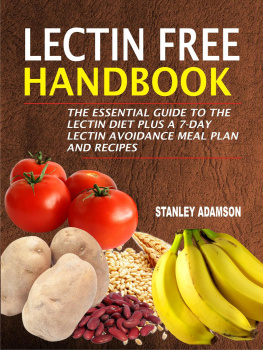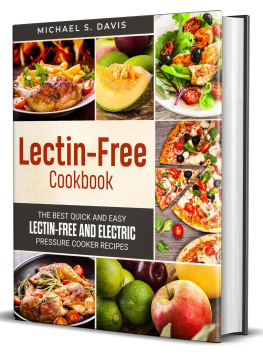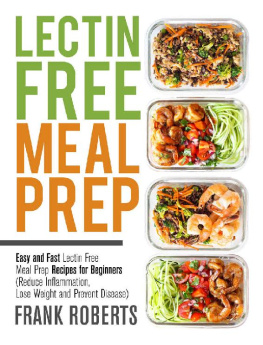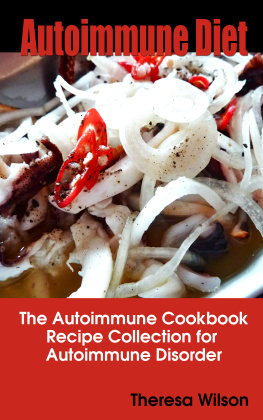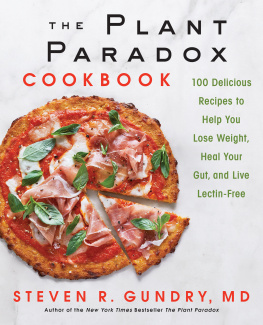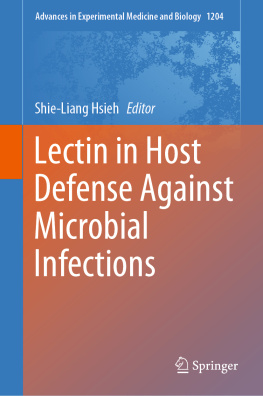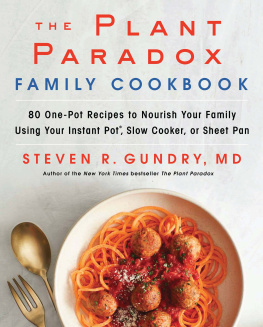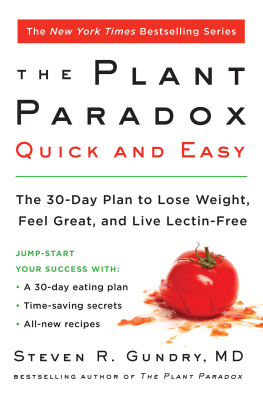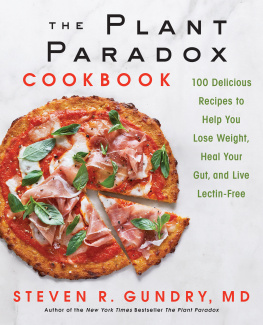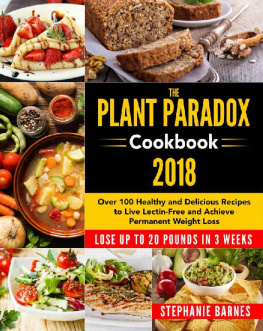Lectin Free Handbook
The Essential Guide To The Lectin Diet Plus A 7-Day Lectin Avoidance Meal Plan And Recipes
STANLEY ADAMSON
Copyright 2018 Stanley Adamson
All rights reserved. No part of this publication may be reproduced, distributed, or transmitted in any form or by any means, including photocopying, recording, or other electronic or mechanical methods, without the prior written permission of the publisher, except in the case of brief quotations embodied in critical reviews and certain other noncommercial uses permitted by copyright law.
Limit of Liability/Disclaimer of Warranty: While the publisher and author have used their best efforts in preparing this book, they make no representations or warranties with respect to the accuracy or completeness of the contents of this book and specifically disclaim any implied warranties of merchantability or fitness for a particular purpose. No warranty may be created or extended by sales representatives or written sales materials. The advice and strategies contained herein may not be suitable for your situation. You should consult with a professional where appropriate. Neither the publisher nor author shall be liable for any loss of profit or any other commercial damages, including but not limited to special, incidental, consequential, or other damages.
Table Of Contents
Chapter 1 WHAT ARE LECTINS?
T here is an almost endless list of foods that cause allergic reactions in humans. Proteins are the greatest culprits on the list of allergy inducing foods. Sometimes, people react to a particular food item when it is in one form and they have no reaction to the same food in another form. Also, people have varying reactions to different part of the same plant food (leaves, seeds etc). Scientists have spent countless years identifying why this is so. They have discovered glutens and more recently lectins are on the news as one of the dietary proteins that cause autoimmune diseases, inflammation and weight gain.

L ectins are a type of naturally occurring proteins that bind to carbohydrates. They are found in plants and animals. They are also called glycoproteins, which is simply a name for proteins that contain chains of carbohydrates. They help cells to communicate, interact or bind with each other. They exist in most animal and plant foods with a higher occurrence in beans, legumes, nightshade vegetables, whole grains (such as barley, rice and quinoa) and lower amounts in dairy products and eggs.
* Do not confuse lectin with lecithin
These two words may sound similar but they refer to two different things. Lectin is a protein that binds to sugars while lecithin is a term that is used to describe a group of yellowish-brown lipids (fats) that are found in animals and plants.
Scientific studies on lectins have been going on for over 130 years and most of them are found to be harmless. Lectins are natural defense mechanisms possessed by plants and animals to aid their survival. They are essentially a low level toxin that is designed to discourage predators from eating the plant or animal. When the plant or animal is eaten, a negative reaction is triggered that discourages further consumption. The plant or animal is then seen as not being desirable as a food source.
Current research has shown that the highest occurrence of lectins in animals is found in dairy. Milk production in mammals only happen when they have newborns to feed. Since newborns are very weak, they cannot protect themselves. Therefore the mother's milk has a high lectin content. This lectin is harmless to the newborn but toxic to predators. These predators include fungal and bacteria pathogens that may cause diseases that can kill the newborn. Lectins work by making the food dangerous to other species but harmless to those who are supposed to get it.
However, some lectins have damaging effects because they have a high level of toxicity even in small doses. These lectins can be a source of digestive problems as well as weight gain. They have been linked to inflammation and autoimmune disorders. Examples are lectins in white kidney bean and castor bean. In these plants, the lectins offer benefits such as providing nitrogen for growth and acting as part of the protective system. They help the plants to thwart off predators by causing uncomfortable symptoms when the plant is eaten. These symptoms discourage the animals (and humans) from eating the plant.
These types of lectins that provide a protective mechanism for plants are toxic to the human body. They have a negative impact on the human body in multiple ways. These types are dangerous because they cause digestive troubles, increase inflammation and could also contribute to arthritis, acne, and other diseases. They are the reason some plant foods cause an upset stomach when eaten uncooked or undercooked. Lectins have recently come under fire for being a considerable source of food sensitivity and digestive problems. They are anti-nutrient in nature because they block the absorption of nutrients present in other foods.
Some experts claim that the actions of lectins in the cells of the body leads to weight gain. The idea of cutting out lectin containing foods from your diet was first promoted by a cardiologist from California. This is what has led to the creation of the lectin free diet. This is a diet that aims to eliminate or minimize the amounts of lectin that is eaten.
T he lectin free diet is recommended for individuals who are dealing with autoimmune diseases. These people may receive a lot of benefits by restricting lectins in their diet. A total elimination of lectins from the diet is not advisable because lectin-containing foods also contain a lot of beneficial antioxidants and other nutrients. It is better to conduct a personal test by removing these foods one by one to find out the ones that give you the most trouble. For instance, if you constantly experience joint pain and bloating after eating beans, it could be a reaction to lectins.
The Lectin free diet is simply the avoidance of foods that contain lectin as much as you can. Your aim is to find the foods that trouble you the most and either reduce or eliminate their intake. You can also destroy the lectin content of most foods by using the proper cooking methods. This diet is great for people who want to lose weight and also get rid of digestive problems. It is recommended for those who are suffering from an inflammatory or autoimmune condition. If you have not found relief by eliminating FODMAPS or gluten from your diet, getting rid of lectins may do you a lot of good.
Next page
